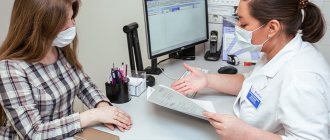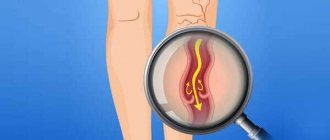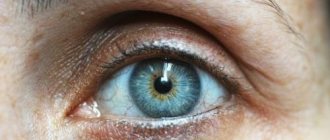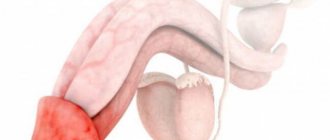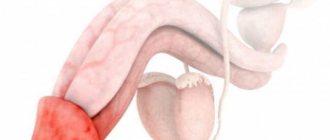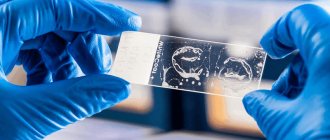And the forecasts are disappointing. In 15 years, the incidence of cancer will increase by 70%, already in 2032 it will be 22 million people. Globally, one in five men and one in six women are potentially victims of cancer. At the same time, prognoses in the later stages of tumor development are not always comforting. And it is better to try to recognize a malignant tumor at the very beginning, when there are often no symptoms yet, and cure it completely.
When cancer is detected in someone in the family, it becomes a real shock for loved ones and for the cancer patient himself. First thought: why did this happen? How could they have missed this? What needs to be done in order to detect cancer when it is easier to fight it, and what to pay attention to in relatives, was told to AiF.ru by Doctor of Medical Sciences, Associate Professor, Head of the Department of Skin and Soft Tissue Tumors of the Moscow Clinical Research Center. . A. S. Loginova Konstantin Titov .
Article on the topic Invisible enemy. Who is at risk and what tests will tell about cancer?
Attention to tests
Children rarely suffer from malignant tumors. They account for only 10% of all childhood diseases. Moreover, the majority of all cancers in children are hemoblastoses (blood tumors). One of the manifestations of the disease is a change in the cellular composition of the blood and anemia (decrease in the level of hemoglobin in the blood). Common symptoms of anemia include fatigue, weakness, lethargy and pale skin.
Of course, a decrease in hemoglobin levels is not always a sign of cancer in a child, but if there are problems in this area, you should be wary and conduct a more detailed examination with a doctor.
Paleness is a sign of malaise.
Paleness is a sign of malaise.
Anemia is a disease associated with a low level of hemoglobin in the blood, which is manifested by pallor, weakness, and fatigue. Olga Vladimirovna SOROKINA, Candidate of Medical Sciences (Nizhny Novgorod) talks about this disease.
The disease is revealed by symptoms.
Anemia can be suspected by talking to a person, but the diagnosis is made only after receiving the results of a general blood test. Normal blood hemoglobin levels range from 120 (in women) to 130 g/l (in men).
In mild anemia, hemoglobin drops to 90 g/l (grams per liter). In this case, patients either do not realize their illness or experience weakness and fatigue. Children begin to play outdoor games less, lie down more, schoolchildren's academic performance decreases, many have difficulty fulfilling the standards in physical education lessons, although they previously coped with the tasks easily.
A decrease in hemoglobin from 70 to 90 g/l indicates moderate anemia. Patients experience severe discomfort.
In severe anemia, the blood hemoglobin level is 70 g/l or less. In young children, such anemia can occur with a monotonous diet, when cow's milk or unadapted milk formulas predominate in the baby's diet. But most often, severe anemia develops after injuries or major operations (usually during hospitalization). In any case, a low blood hemoglobin level requires hospital treatment: the patient is sent to the hospital for a blood or red blood cell transfusion.
As a rule, the development of anemia lies in insufficient intake of food rich in iron (this problem especially affects children and adolescents). Such anemia is called iron deficiency. The foods that contain the most iron are beef, liver, tongue, fish, and eggs. There is practically no iron in sausages and sausages. Among plant products, apples, pomegranates, and legumes are recommended; cereals include oatmeal, and to a lesser extent, oatmeal and buckwheat.
Anemia can develop with stomach ulcers, chronic gastritis, and intestinal diseases (the absorption of iron from food is impaired). Sick children and patients who have undergone severe bleeding or surgery on the stomach and intestines are also at risk.
Anemia caused by a deficiency of vitamin B12 in food impairs the nervous system and leads to irritation in the mouth.
Rare anemias include hereditary hemolytic anemias or disorders that occur due to severe infection, poisoning, a malfunction of the immune system, etc. There are also forms of anemia (aplastic), in which the number of all blood cells in the blood decreases, which leads to a sharp suppression of the immune system and the occurrence of life-threatening diseases. Sometimes the impetus for the development of the disease is blood loss.
In severe pneumonia (pneumonia), chronic hepatitis, systemic lupus erythematosus and a number of other diseases, a decrease in blood hemoglobin also occurs, but not immediately, but gradually.
When are medications needed?
To treat iron deficiency anemia, iron preparations are prescribed, such as Ferroplex, Tardiferon, Fenuls, Ferrogradument, Sorbifer, etc. In this case, the patient must undergo regular blood tests - this will allow him to monitor hemoglobin levels. After hemoglobin levels increase to normal, the drugs are taken for another two weeks - it is during this time that iron reserves in the body are restored. In order for iron supplements to be better absorbed, it is recommended to take them before meals (by the way, cow's milk makes it difficult to absorb iron).
Risks of youth
Those aged 18-44 years are usually not at risk for so-called non-hereditary cancer: the risk of developing cancer at this age is much lower than in older people. However, there are types of tumors that can appear specifically in this age group. These are sarcomas, melanomas and hemoblastoses. And here it is worth understanding that at a young age the prognosis is always worse. It is necessary to monitor your health more carefully in order to recognize the problem in time and seek medical help.
If a young woman notices lumps and nodes in the mammary gland or discharge from the nipple, and she is not a nursing mother, this is a reason to immediately consult a doctor. Before the age of 40, you need to go for an ultrasound of the mammary glands; for older women, a referral for mammography is prescribed. It is also worth consulting with an oncologist-mammologist.
Article on the topic
Immunity affected by cancer. Who is at risk for Hodgkin's lymphoma In addition, Hodgkin's lymphoma (a malignant tumor of lymphoid tissue) occurs in young people. This is not the most common oncological pathology, but the course of this disease is aggressive. A striking symptom that the person himself and his relatives can pay attention to is enlargement of peripheral lymph nodes, when there is no particular reason for this: the person has not been injured and does not suffer from viral or bacterial infections. If he does not have a cold, his teeth do not hurt or there are no inflammatory processes, and his lymph nodes are enlarged, he should go for a consultation with a hematologist and then undergo blood tests. If necessary, a biopsy of the node may be required.
Another dangerous tumor that should be given special attention is skin melanoma. It most often forms spontaneously in places where the skin was previously burned by the sun. In 20-30% of cases it becomes a consequence of the degeneration of the so-called. melanoma-dangerous nevi (special moles). Tanning in a solarium or on the beach, which was excessive and caused skin burns, is most dangerous for blondes with fair skin. Due to an excess of ultraviolet radiation, the transformation of special skin cells that produce dark pigment into melanoma begins. Particular attention should be paid to changes in the color, shape and edges of the pigment formation and its growth. In such a situation, a reason to visit a specialist oncodermatologist.
Young people can also develop sarcoma: an aggressive cancer that affects bones or soft tissues (muscles, ligaments, adipose tissue, etc.). The most common variant is osteogenic sarcoma.
Young people are also susceptible to thyroid cancer: it manifests itself as a palpable node in the anterior surface of the neck. True, a nodular goiter often looks like this. This is not such a dangerous disease, but still, if such a node appears, a visit to the endocrinologist will not hurt.
And loved ones should be wary if young members of their family have constant headaches, dizziness, decreased vision, or problems with coordination of movements. In this case, it is necessary to conduct an MRI of the brain to check for the presence of a tumor.
Cancer building. What has changed in the treatment of cancer Read more
How to improve your skin tone?
There are standard recommendations that will help remove unhealthy complexion:
- you need to undergo a medical examination to determine possible diseases that could provoke this problem;
- carry out treatment that should be prescribed by a doctor;
- lead the right lifestyle, it should be active;
- Get enough sleep. This should be at least 6 hours per day;
- eat the right food - more fresh foods, less pickled, fried, fatty flour, drink clean water and plenty of it;
- exercise;
- walk in the fresh air, ventilate the room;
- do not use a lot of contraceptives, antibiotics;
- avoid stressful situations;
- try quitting smoking and drinking less.
These are the main activities that will help improve your skin tone and help your skin heal.
Age-related changes
After a person reaches the age of 45-50 years, the likelihood of developing cancer increases. The longer a person lives, the more he comes into contact with carcinogenic factors. In addition, he already has chronic inflammatory diseases (where constant cell division and mutations occur), against which cancer often forms. Therefore, it is important to regularly undergo medical examinations and screenings offered at the clinic. This will allow us to identify precancer and early stages of cancer pathologies.
Screening is the most effective way to reduce mortality from major cancers among adults. For women, this is early detection of breast and cervical cancer. Screening also makes it possible to determine the early stages of colon cancer and lung cancer, including in people with a long history of smoking.
Article on the topic
Doesn’t hurt – does that mean you’re healthy? 12 myths about oncology that you shouldn’t believe The appearance of characteristic symptoms - sudden weight loss for no apparent reason, the appearance and intensification of weakness, pallor or yellowness of the skin, decreased appetite, increased shortness of breath and hemoptysis, an increase in the size of the abdomen, bloody discharge from the genital tract, etc. - occurs, as a rule, already at stages 3-4 of cancer. If such ominous signals occur, you should immediately consult a doctor and urgently undergo examinations to exclude or confirm cancer. Relatives should insist that their loved one with similar symptoms visit a doctor.
It is important to understand that cancer is not always a death sentence. If you take care of yourself, pay attention to the condition of your relatives in time and go with them to the doctor, it is quite possible to be cured.
Pale facial skin: objective reasons
The main objective reason is age. In addition to facial wrinkles and age-related wrinkles, skin aging also involves a change in its shade. It turns from healthy pink to light yellow, which indicates a lack of moisture in the dermis. Its retention is entrusted to collagen fibers, which, as the body ages, begins to be produced in ever smaller quantities and ceases to fully perform its function. The skin loses moisture, dries out, and becomes vulnerable to external influences. This is facilitated by poor tissue nutrition, which occurs during less active work of the cardiovascular system.
Procedures to improve skin color
How to improve complexion? In salons today, many procedures are carried out, and among them there are some that correct skin tone and eliminate its dullness. And many experts say that such procedures are distinguished by their effectiveness. There are certain limitations and indications for each technique. Therefore, you first need to study the cause of the skin color disorder, and then only think about treatment. Cosmetologists recommend performing the following procedures to improve skin tone:
- mesotherapy. Here the cells are filled with nutrients. Injections are made into problem areas and the drug is administered. As for the medicine, it depends on the disorder itself, its type;
- chemical peeling. This method of skin correction is considered very effective. Special preparations are applied externally, causing a chemical burn, which can vary in intensity. Even if the treatment is superficial, the result of the procedure will be different. The skin of the face will be smooth, elastic, toning, and will have an even tone. But this procedure needs to be done by professionals to avoid serious consequences;
- laser peeling. It already uses a laser that does the job accurately. It will help get rid of age spots, brown, dull complexion;
- face massage. This procedure is characterized by normal perception and safety. It allows you to improve skin tone, remove skin unevenness, regenerate tissue, stimulate blood circulation;
- other procedures. They also carry out plasma lifting, photorejuvenation, biorevitalization, etc.
Gray complexion can be removed using ultrasonic facial skin cleansing. It has proven its effectiveness. But it is worth remembering that all of the listed procedures should be performed exclusively by specialists.
Dull complexion
The health and appearance of the skin depend mainly on its level of moisture and the state of local blood circulation, and a dull complexion is a consequence of an unhealthy lifestyle. The condition of facial skin is negatively affected by lack of sleep, fasting or strict diets, physical inactivity, bad habits, and excessive tanning.
As a result of chronic lack of sleep, the skin does not have time to rest and recover normally overnight, resulting in pallor, deteriorating complexion, and the process of premature cell aging. Dietary restrictions lead to the skin not receiving enough essential nutrients, microelements and vitamins, which are the “building material” for new cells. Staying in one position for a long time (for example, sitting at a computer) leads to overstrain and spasm of the muscles of the cervical-collar region, resulting in impaired blood circulation in the neck and head. All this is immediately reflected in the appearance of the skin - the complexion becomes dull and lifeless.
Excessive use of tanning (prolonged sunbathing or frequent visits to the solarium) contributes to the violation of the hydro reserve, loss of elasticity and photoaging of the skin, causing the appearance of hyperpigmentation. Therefore, skin damaged by excess ultraviolet radiation looks dehydrated, dull and tired. The complexion changes due to improper skin care or lack thereof. Lack of fresh air, as well as poor environmental conditions, can also cause a dull complexion. It is not without reason that this cosmetic problem is considered relevant for residents of large cities suffocated by smog.
In winter, the condition of the skin is negatively affected by low outdoor temperatures, frosty winds, dry air in apartments and offices, lack of sunlight and vitamin deficiency. Therefore, by the beginning of spring, many women notice that the skin has lost its freshness and the complexion has become dull. Unhealthy complexion can be caused by the accumulation of dead cells and dust covering the skin - oily skin is most susceptible to contamination. In addition, with age, the regeneration of the epidermis slows down, keratinized cells exfoliate more slowly, which also leads to dullness of the epidermal layer.
The expression “smoker's face” has long come into everyday use. Premature wrinkles, grayish tint and dry skin, sunken cheeks, deep nasolabial folds - these are typical touches to the portrait of a person who cannot part with a cigarette. Toxic substances contained in tobacco smoke cause spasm of skin capillaries. In addition, when smoking, the amount of carbon monoxide in the blood sharply increases. This means that the skin of the face is poorly supplied with blood and enriched with nutrients and oxygen. Therefore, smoking inevitably leads to changes in the structure of the skin - increased dryness, sagging, uneven and dull complexion, and premature aging.
In some cases, a dull complexion may reflect poor overall health. Thus, dry and gray skin, brittle nails and hair loss are often signs of hypothyroidism. Changes in the condition and color of the skin are caused by gastrointestinal diseases (cholecystitis, pancreatitis, constipation, dysbacteriosis), osteochondrosis of the cervical spine, long-term use of medications, menopause, etc.
When does pallor occur throughout the body?
Central cyanosis or, in other words, pallor of all the skin of our body occurs when there is a violation of blood saturation in the lungs.
This happens in the following cases:
- Respiratory failure due to lung diseases
- Some blue-type heart defects, in which there is a pathological discharge of venous blood into the arterial bed due to defects in various walls of the heart, for example, with tetralogy of Fallot
- Exposure to various industrial poisons, such as aniline derivatives
- Taking certain medications (for example, sulfa drugs)
As a rule, the disappearance of the pathological factor, as well as the supply of oxygen, leads to a decrease in the severity of cyanosis.
